Die Anschrift
304 Nordkardinal St.
Dorchester Center, MA 02124
Arbeitsstunden
Montag bis Freitag: 7:00 - 19:00
Wochenende: 10:00 - 17:00
Die Anschrift
304 Nordkardinal St.
Dorchester Center, MA 02124
Arbeitsstunden
Montag bis Freitag: 7:00 - 19:00
Wochenende: 10:00 - 17:00

Dieser umfassende Leitfaden befasst sich eingehend mit den verschiedenen Aspekten der Krankenhausbettgröße und hilft Ihnen, eine fundierte Entscheidung für eine optimale Patientenversorgung zu treffen.
Willkommen auf meinem Blog!
Bevor wir uns in die Inhalte vertiefen, würde ich mich freuen, wenn Sie mir auf meinen Social-Media-Plattformen folgen, wo ich weitere Einblicke gebe, mit der Community interagiere und Updates poste. So können Sie mit mir in Kontakt treten:
Facebook:https://www.facebook.com/profile.php?id=100071234835011
LinkedIn:https://www.linkedin.com/company/74943205/admin/dashboard/
YouTube:www.youtube.com/@shandongexpertmedicalequip4695
TikTok:www.tiktok.com/@expertmedical
Lassen Sie uns nun gemeinsam unsere Reise beginnen. Ich hoffe, Sie finden die Inhalte hier aufschlussreich, spannend und wertvoll.

Die Wahl der richtigen Krankenhausbettgröße ist entscheidend für den Komfort, die Sicherheit und die Genesung des Patienten. Ein zu kleines Bett kann die Bewegungsfreiheit einschränken, das Risiko von Druckgeschwüren erhöhen und die Pflege durch das Pflegepersonal erschweren. Andererseits kann ein zu großes Bett wertvollen Platz beanspruchen und den Patienten den Zugang zu wichtigen Gegenständen erschweren. Dieser umfassende Leitfaden befasst sich mit den verschiedenen Aspekten der Krankenhausbettgröße und hilft Ihnen, eine fundierte Entscheidung für eine optimale Patientenversorgung zu treffen.
Ein Krankenhausbett mit der richtigen Größe wirkt sich direkt auf den Patientenkomfort aus. Ein zu schmales Bett kann Unbehagen verursachen und die Bewegungsfreiheit einschränken, was möglicherweise zu Druckgeschwüren führt. Ausreichend Platz ermöglicht Patienten einen bequemen Positionswechsel, fördert die Durchblutung und reduziert das Risiko von Komplikationen.
Auch die Größe des Krankenhausbettes beeinflusst die Effizienz des Pflegepersonals. Ein zu kleines Bett kann es Pflegekräften erschweren, Patienten beim Transfer, Umlagern und anderen wichtigen Aufgaben zu unterstützen. Ausreichend Platz um das Bett herum ist entscheidend, damit Pflegekräfte die Geräte manövrieren und eine effektive Pflege gewährleisten können.
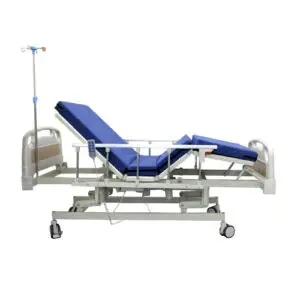
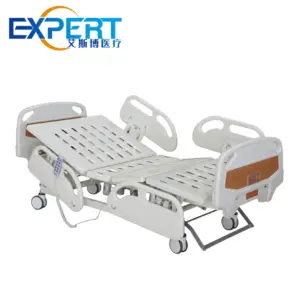
Standard-Krankenhausbetten sind typischerweise 91 cm breit und 203 cm lang. Es gibt jedoch verschiedene Größen, um den unterschiedlichen Bedürfnissen der Patienten gerecht zu werden. Die Kenntnis dieser Abmessungen ist für die Auswahl des passenden Bettes unerlässlich.
Die gängigsten Krankenhausbettbreiten sind 91,4 cm, 99,1 cm und 107,7 cm. Die 91,4 cm Breite gilt als Standard und ist daher die am häufigsten verwendete Option in Krankenhäusern und Pflegeeinrichtungen. Die Breiten 99 und 107 cm bieten zusätzlichen Platz für größere Patienten oder Patienten mit Bewegungsfreiheit, sorgen für mehr Komfort und verringern das Risiko von Druckstellen. Die Wahl der richtigen Bettbreite kann die Patientenergebnisse verbessern, indem sie Mobilität, Komfort und das allgemeine Pflegeerlebnis steigert.
Die Standardlänge eines Krankenhausbetts beträgt 203 cm und bietet damit einem durchschnittlichen erwachsenen Patienten bequem Platz. Für größere Patienten sind Bettverlängerungen erhältlich, um die Länge zu verlängern und eine optimale Unterstützung zu gewährleisten, sodass die Beine nicht über die Kante hängen. Diese Verlängerungen verlängern das Bett in der Regel um 10 bis 20 cm und machen es so besser für Patienten über 1,80 m geeignet. Die richtige Bettlänge trägt zur korrekten Ausrichtung der Wirbelsäule bei und reduziert das Risiko von Beschwerden oder Verletzungen.
Bariatrische Krankenhausbetten sind für Patienten mit höherem Gewicht konzipiert und bieten die notwendige Unterstützung für Personen mit Adipositas oder anderen Erkrankungen, die verstärkte Rahmen erfordern. Diese Betten verfügen typischerweise über breitere und verstärkte Strukturen für mehr Stabilität. Die Breite variiert zwischen 107 und 152 cm und die Tragfähigkeit liegt bei über 317 kg. Der zusätzliche Platz und die Robustheit bariatrischer Betten tragen dazu bei, Stürze zu vermeiden, den Patientenkomfort zu verbessern und Pflegekräfte bei der sicheren und effizienten Pflege zu unterstützen.
Bei der Wahl der Krankenhausbettgröße sollten verschiedene Faktoren berücksichtigt werden, darunter Patientengröße, Mobilität und spezifische medizinische Bedürfnisse. Die richtige Bettgröße gewährleistet optimale Pflege, Komfort und vermeidet Komplikationen wie Wundliegen oder Bewegungseinschränkungen. Darüber hinaus sollten Faktoren wie Platzangebot, Zugang für Pflegekräfte und Kompatibilität mit medizinischen Geräten berücksichtigt werden, um eine optimale Pflegeumgebung zu schaffen.
Größe und Gewicht des Patienten sind wichtige Kriterien bei der Auswahl eines Krankenhausbettes, da ein schlecht passendes Bett Komfort und Sicherheit beeinträchtigen kann. Das Bett muss das Gewicht des Patienten bequem tragen und ausreichend Bewegungsfreiheit bieten, um das Risiko von Druckgeschwüren und Muskel-Skelett-Belastungen zu verringern. Betten für schwerere Patienten sollten eine robuste Konstruktion, verstärkte Seitengitter und spezielle Matratzen für mehr Halt und Haltbarkeit aufweisen.
Auch die Mobilitäts- und Positionierungsbedürfnisse der Patienten spielen eine entscheidende Rolle bei der Wahl der passenden Bettgröße, insbesondere bei Patienten mit Bewegungseinschränkungen. Patienten mit eingeschränkter Mobilität benötigen möglicherweise ein breiteres Bett, um die Umlagerung zu erleichtern und Druckstellen vorzubeugen. Darüber hinaus benötigen sie Funktionen wie Höhenverstellung und Seitengitter für einen leichteren Zugang. Moderne Krankenhausbetten mit elektronischer Steuerung ermöglichen dem Pflegepersonal eine einfache Anpassung der Positionierung und sorgen so dafür, dass die Patienten während der Behandlung und Genesung bequem und in der richtigen Position bleiben.
Bestimmte Erkrankungen und Behandlungsanforderungen können spezielle Bettgrößen erfordern, um optimale Pflege und Unterstützung zu gewährleisten. Patienten mit Atemwegserkrankungen können beispielsweise von einem verstellbaren Bett profitieren, das eine Erhöhung der Position ermöglicht, was die Atmung verbessert und Beschwerden lindert. Auch Patienten, die sich von einer Operation erholen oder unter chronischen Schmerzen leiden, benötigen möglicherweise ein Bett mit individueller Positionierung, um den Druck auf bestimmte Körperbereiche zu verringern. Die Auswahl des richtigen Krankenhausbetts basierend auf den medizinischen Bedürfnissen gewährleistet einen sichereren und effektiveren Heilungsprozess.

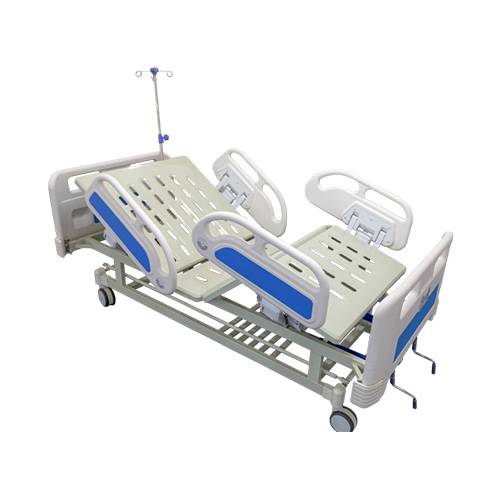
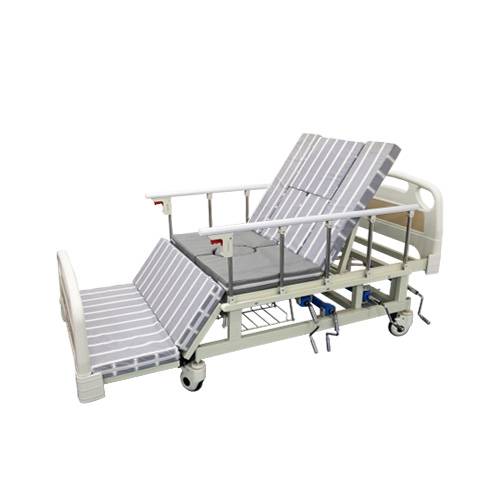

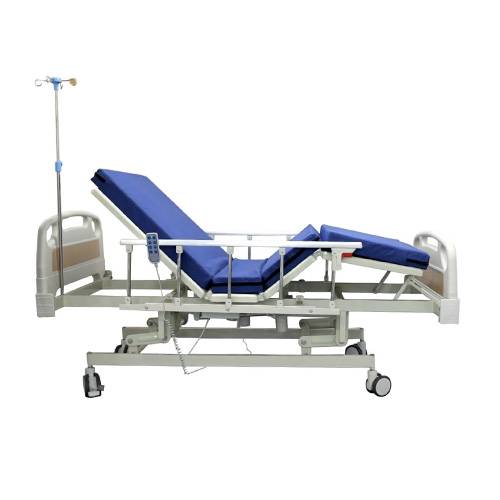




Auch unterschiedliche Krankenhausbettrahmentypen können Einfluss auf die Größe haben.
Manuelle Krankenhausbettrahmen bieten grundlegende Funktionen und sind in Standardgrößen erhältlich.
Halbelektrische Krankenhausbettrahmen bieten einige Einstellmöglichkeiten, wie z. B. die Erhöhung von Kopf- und Fußteil, was sich auf die Gesamtgröße des Bettes auswirken kann.
Vollelektrische Krankenhausbettrahmen bieten erweiterte Einstellmöglichkeiten, einschließlich Höhenverstellung, wodurch der für das Bett erforderliche Platz beeinflusst werden kann.
Einen detaillierten Überblick über unterschiedliche Krankenhausbettgrößen und deren typische Einsatzgebiete bietet die folgende Tabelle:
| Bettentyp | Breite (Zoll) | Länge (Zoll) | Typische Anwendungen |
|---|---|---|---|
| Standard | 36 | 80 | Allgemeine Anwendung, die meisten Patienten |
| Breit | 39 | 80 | Größere Patienten, Patienten, die mehr Bewegungsfreiheit benötigen |
| Extrabreit | 42 | 80 | Größere Patienten, Patienten, die maximalen Bewegungsspielraum benötigen |
| Bariatrisch | 48-54 | 80-88 | Patienten mit höherer Gewichtskapazität |
| Extra lang | 36-42 | 84-90 | Größere Patienten |
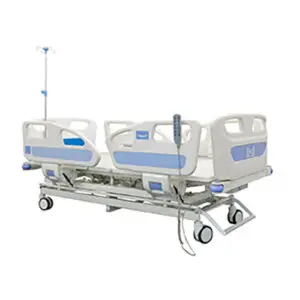
Die Wahl der richtigen Matratzengröße passend zur Größe des Krankenhausbetts ist von entscheidender Bedeutung, um den Komfort des Patienten zu gewährleisten und Sicherheitsrisiken vorzubeugen.
Eine zu kleine Matratze kann Lücken zwischen Matratze und Bettrahmen verursachen. Dies birgt die Gefahr des Einklemmens und kann insbesondere bei Patienten mit eingeschränkter Mobilität zu schweren Verletzungen führen. Eine zu große Matratze kann über den Bettrahmen hinausragen, ihn instabil machen und die Wahrscheinlichkeit von Stürzen oder einer falschen Gewichtsverteilung erhöhen. Für die Patientensicherheit ist es wichtig, eine Matratze zu wählen, die fest im Bettrahmen sitzt und gleichzeitig die korrekte Befestigung von Seitengittern und anderem Stützzubehör ermöglicht.
Eine richtig dimensionierte Matratze sorgt für eine optimale Druckverteilung. Dies ist wichtig, um Druckgeschwüren vorzubeugen und den Patientenkomfort bei längerer Bettruhe zu erhöhen. Druckgeschwüre, auch Dekubitus genannt, können entstehen, wenn sich der Druck auf bestimmte Körperbereiche konzentriert und zu Gewebeschäden und Schmerzen führt. Durch die Verwendung einer Matratze mit gleichmäßiger Gewichtsverteilung, beispielsweise mit Memory-Schaum oder Wechseldrucklufttechnologie, erfahren Patienten eine bessere Unterstützung, eine verbesserte Durchblutung und ein geringeres Risiko von Hautschäden.
Auch die Matratzendicke spielt eine Rolle für Komfort und Stützkraft, da sie direkt beeinflusst, wie gut sich die Matratze an den Körper des Patienten anpasst und Druckstellen entlastet. Standardmatratzen für Krankenhausbetten sind in der Regel 15 cm dick. Je nach Patientenbedarf sind jedoch auch andere Dicken erhältlich, von 10 cm niedrigen Modellen für mehr Stabilität bis hin zu 20 cm oder dickeren Modellen für verbesserte Polsterung. Bei der Wahl der Dicke sollten das Gewicht des Patienten, der Gesundheitszustand und die Art des Bettrahmens berücksichtigt werden, um Verträglichkeit und allgemeines Wohlbefinden zu gewährleisten.
Die Wahl des richtigen Größe des Krankenhausbetts ist eine wichtige Entscheidung, die sich auf den Komfort, die Sicherheit und die Pflege des Patienten auswirkt. Durch die Berücksichtigung von Faktoren wie Patientengröße, Mobilität, medizinischen Bedürfnissen und Bettrahmentyp können Sie eine fundierte Entscheidung treffen, die optimale Ergebnisse fördert.
Was ist die Standardgröße eines Krankenhausbett?
Die Standardgröße eines Krankenhausbettes beträgt 36 Zoll Breite und 80 Zoll Länge.
Welche Krankenhausbettgröße benötige ich für einen bariatrischen Patienten?
Bariatrische Patienten benötigen spezielle Betten mit breiteren und verstärkten Rahmen. Diese Betten sind typischerweise 48 bis 54 Zoll breit und 80 bis 88 Zoll lang.
Wie wähle ich die richtige Matratzengröße für ein Krankenhausbett?
Die Matratzengröße sollte der Größe des Bettrahmens entsprechen, um Lücken und Überhänge zu vermeiden. Standardmatratzen für Krankenhausbetten sind in der Regel 15 cm dick.
Welche Vorteile bietet die Wahl des richtigen Größe des Krankenhausbetts?
Die Wahl der richtigen Krankenhausbettgröße bietet zahlreiche Vorteile, darunter verbesserten Patientenkomfort, ein geringeres Risiko von Druckgeschwüren, eine höhere Effizienz des Pflegepersonals und insgesamt bessere Gesundheitsergebnisse.
Hat die Größe eines Krankenhausbetts Einfluss auf die Art der Bettwäsche, die ich benötige?
Ja, Sie benötigen Bettwäsche in der passenden Größe für das von Ihnen gewählte Krankenhausbett. Standard-, Breit- und Adipositasbetten erfordern Laken und Decken unterschiedlicher Größe.